Although all the live events of a dear friend’s marketing bootcamp completely conflicted with my schedule, I managed to attend the first half of the one whose topic struck the strongest chord.
The focus was on talking about what you do, a topic that’s often quite challenging for entrepreneurs and artists and pretty much anyone who doesn’t have a clearly defined job.
Sidebar: Perhaps my favorite moment in the Netflix series Black Doves was when undercover spy Keira Knightley asks her hitman colleague Sam what he tells his partner he does for a living.
Sam relates that he simply tells everyone he works in “insurance” and no one ever asks any questions after that.
While I have a crafted elevator pitch highlighting various projects semi-memorized, this week when I had to fill out my form for Jury Duty, figuring the court system wasn’t interested in the complexity of my career journey, I simply put “writer.”
That seemed the most honest, straightforward answer.
Lately, however, I’ve been inwardly shrugging at how much being a writer requires stepping in front of a camera.
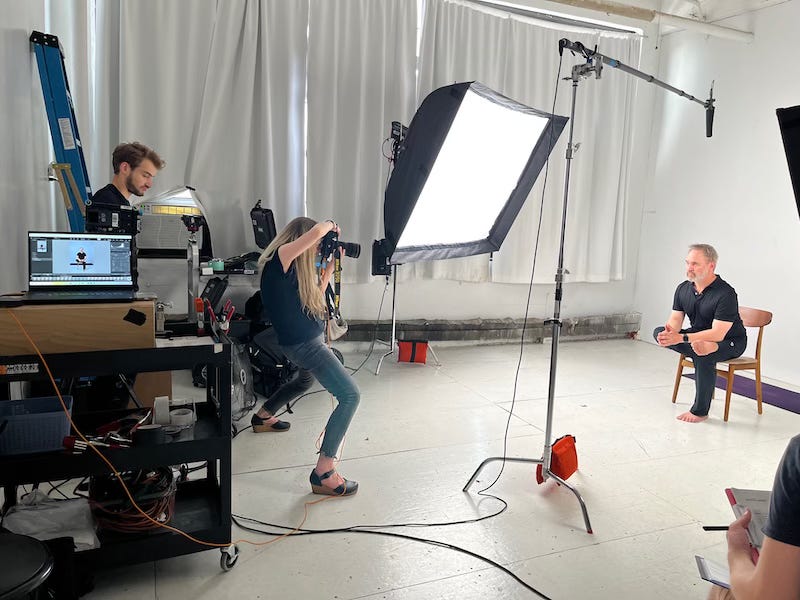
For my earliest projects, “hitting the jackpot” meant getting invited onto a talk show every few years when you had a book released.
Now, not having a weekly video podcast on YouTube feels tantamount to career suicide.
Although part of me is genuinely excited about launching a podcast to accompany this newsletter, the complexity of the on-camera components is something I hadn’t fully factored into the equation.
Every day seems to require some new piece of tech—whether that’s a superior microphone, a boom arm to position it, a heavy-enough stand to hold everything, or hiring an editor to cut a 9-second trailer.
Beyond this, I’m also the final speaker at the first-ever DailyOM Global Online Summit on June 8th—sign-up details coming soon—which means I have several sound and light checks on my calendar.
The irony is not lost on me since this month, I’m exploring the theme of The Mirror—May meditation HERE––inspired in part because never in a million years did I think that traveling the Writer’s Path would require less staring at the blank page than at my own face.
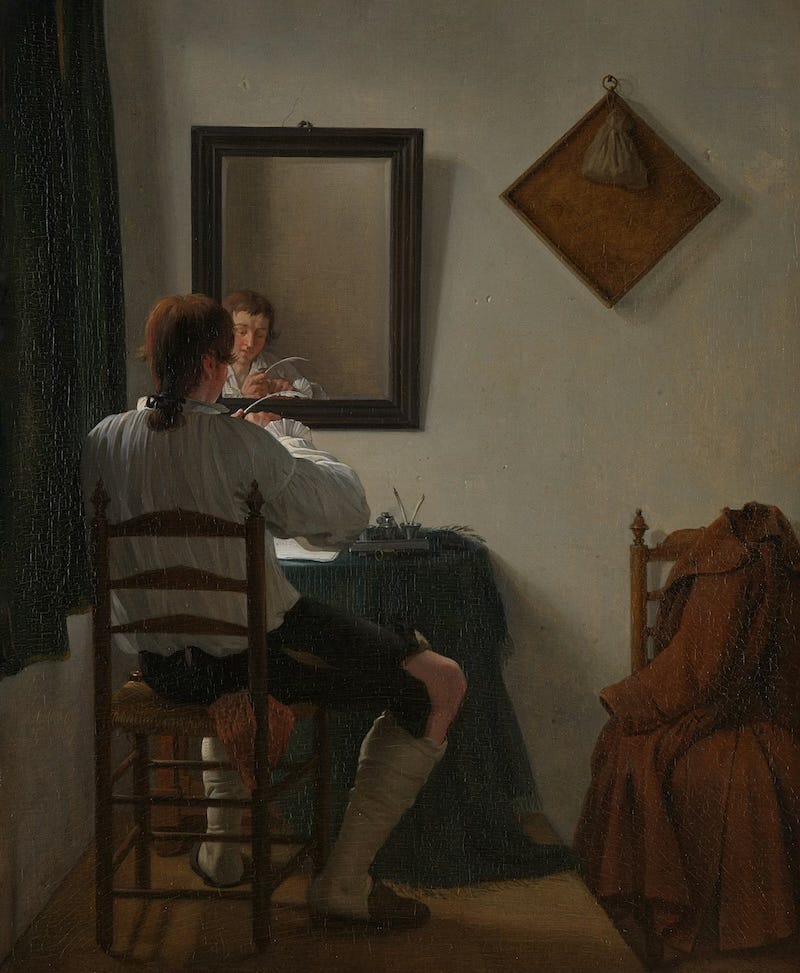
• A Writer Trimming His Pen, Jan Ekels the Younger • 1784, now in the Rijksmuseum Amsterdam •
Having directed many of my own film projects, I’m always fascinated by how actors react to seeing themselves.
At one end of the spectrum was the wonderful Tony Roberts (who passed away this February at 85), perhaps best known for two Tony nominations and for co-starring in six classic Woody Allen films.
Years ago, I cast Tony in my first indie film.
A truly great guy, he was also the absolute epitome of professionalism.
That’s why I was surprised by his response when I invited him and the other leads to see the dailies.
He politely declined, saying that even after being in 19 feature films and about 50 TV shows, he wasn’t able to watch himself without a deafeningly loud inner conversation about his appearance, mannerisms, or performance.
In contrast to this, other successful actors I’ve known are able to watch themselves with complete detachment, sometimes eerily referring to themselves on camera in the third person.
“I really like her hair there,” one starlet remarked while looking at herself, clearly able to completely separate the celluloid reproduction from the original human being.
Such detachment from the mirror is admirable, but something I definitely do not yet fully possess.
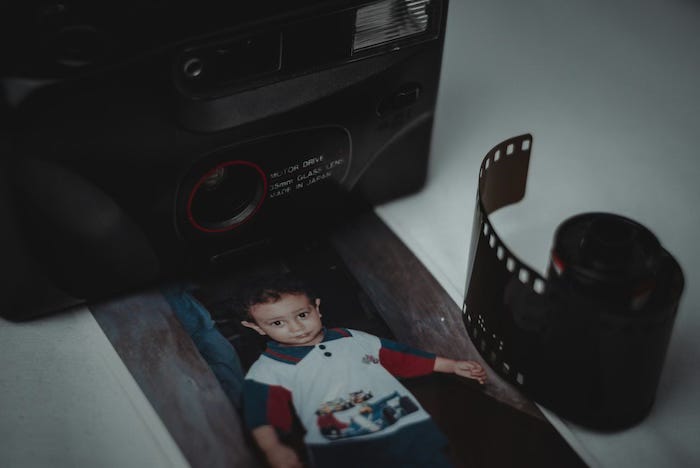
As I explore this theme, I’m again reminded of what Kim Krans writes in her Archetypes Guidebook about “the power and danger of The Mirror”:
“The Mirror…is a construct,
one that may drive a shard between you and your true self.
The Mirror contains trickster energy.”
That trickster energy was fully on display a decade ago when a woman named Belinda Jasmine appeared on ABC’s Shark Tank.
Her product: a self-proclaimed “Skinny Mirror.”
By showing a slightly slimmer reflection (around 5-10 pounds lighter) than reality, Jasmine claimed the mirror was designed to boost self-esteem.
The sharks, however, saw it as extremely deceptive, and no deals were made.
A year later, in 2016 after significant negative press coverage and public criticism when retailers used Skinny Mirror without informing customers, the company quietly shut down.
Despite our often complicated relationship with mirrors, it’s somehow even more unnerving when they lie to us not behind our back, but to our faces.
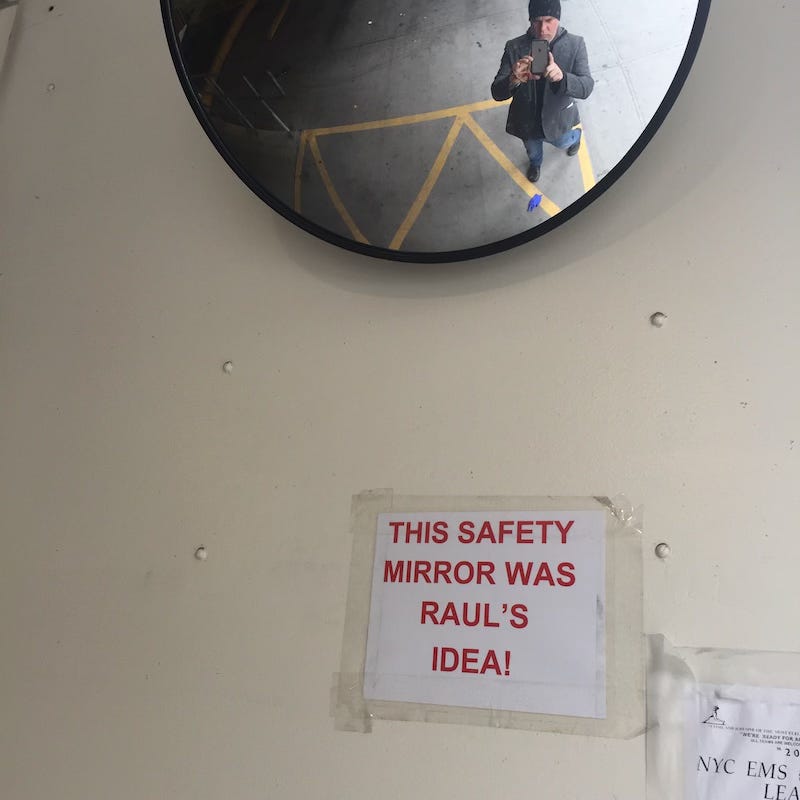
• Yours truly returning a zip car to an NYC parking garage, of course grateful to Raul and his mirror •
It’s rare that we hear from the actual mirror’s P.O.V.
Sylvia Plath brilliantly does just this in her poem, Mirror.
MIRROR
I am silver and exact. I have no preconceptions.
Whatever I see I swallow immediately
Just as it is, unmisted by love or dislike.
I am not cruel, only truthful‚
The eye of a little god, four-cornered.
Most of the time I meditate on the opposite wall.
It is pink, with speckles. I have looked at it so long
I think it is part of my heart. But it flickers.
Faces and darkness separate us over and over.
Now I am a lake. A woman bends over me,
Searching my reaches for what she really is.
Then she turns to those liars, the candles or the moon.
I see her back, and reflect it faithfully.
She rewards me with tears and an agitation of hands.
I am important to her. She comes and goes.
Each morning it is her face that replaces the darkness.
In me she has drowned a young girl, and in me an old woman
Rises toward her day after day, like a terrible fish.
What I find most striking about the poem is that while most of the lines portray the mirror as coldly objective, viewing the woman’s aging “just as it is, unmisted by love or dislike”—this is not entirely the case.
While the mirror seems to have no agenda, “no preconceptions” in what it reflects, it does seem alive and active, meditating on the opposite wall “so long I think it is part of my heart.”
For the mirror, faces come and go, but what’s behind the reflection apparently lives on.
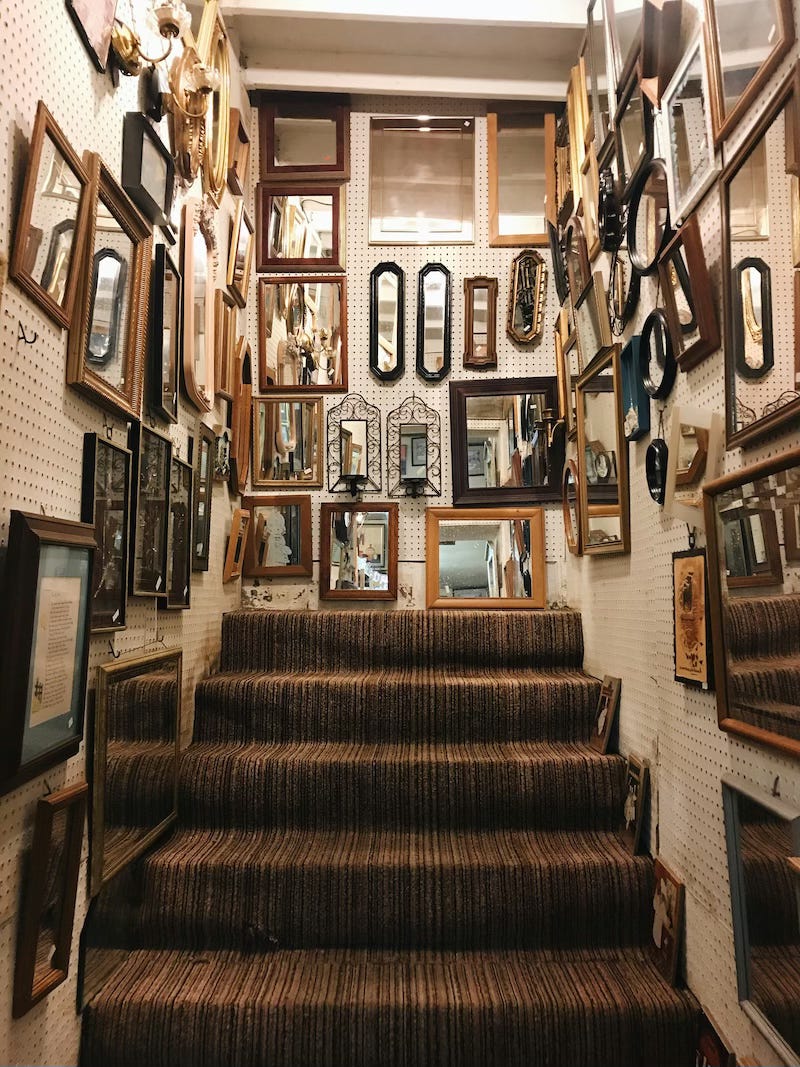
One of the spiritual practices that informs this month’s guided meditation—again it’s HERE—is known as Neti, Neti (in Sanskrit: नेति नेति).
Taken from the Upanishads, it means “not this, not that.”
In some ways, it’s the ultimate Anti-Mirror practice.
Looking into a mirror—or, more often, simply observing one’s thoughts—one methodically rejects all the things one is not.
“I am not the body… I am not the mind… I am not the emotions,” etc., until every identification, every reflection fades.
The ultimate purpose of Neti, Neti is that, by continually rejecting all that one is not,one arrives at what one truly is: formless, eternal consciousness.
Even so, despite going in the exact opposite direction, I can’t help but wonder how well-received such an identity-negating mirror would fare on Shark Tank.

The earliest mirrors were made from polished stone, dating from 6000 BCE, but by 3000 BCE, Egyptians and Mesopotamians were crafting them from burnished copper, often shaped into circles with handles.
The Upanishads and Neti, Neti are from around this time, although I’d wager this idea of looking beyond the mirror to see eternal truth behind it predates even that.
Certainly, all of this is well before our Gilded Age of Social Media, where appearances are not only constantly projected but also filtered and curated.
Despite starlets who can look at themselves and see a third party, more often than not our dialogue with what’s reflected back to us can be quite intense.
Some Mirror practices encourage us to have a kinder conversation about what we see, but perhaps the most powerful ones are designed to have us look beyond it.
Far more than any deceptive Skinny Mirror shedding those final ten pounds, we might be able to see ourselves, as the poet says, “unmisted by love or dislike”—as who we really are.
That might be an extraordinary sight indeed.

